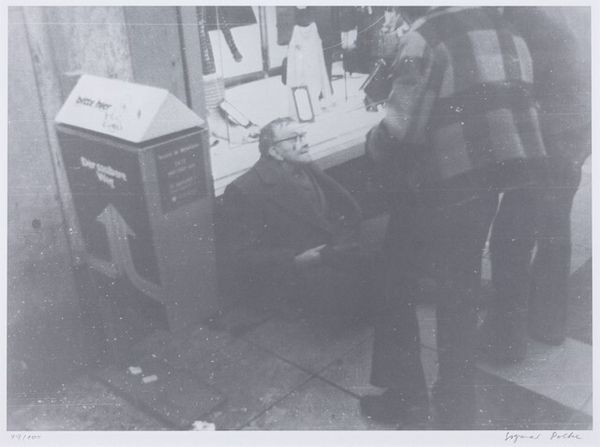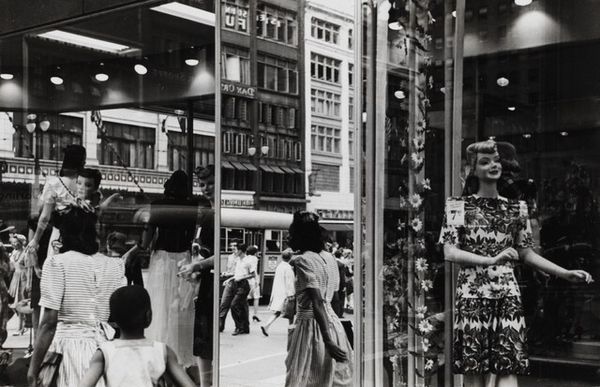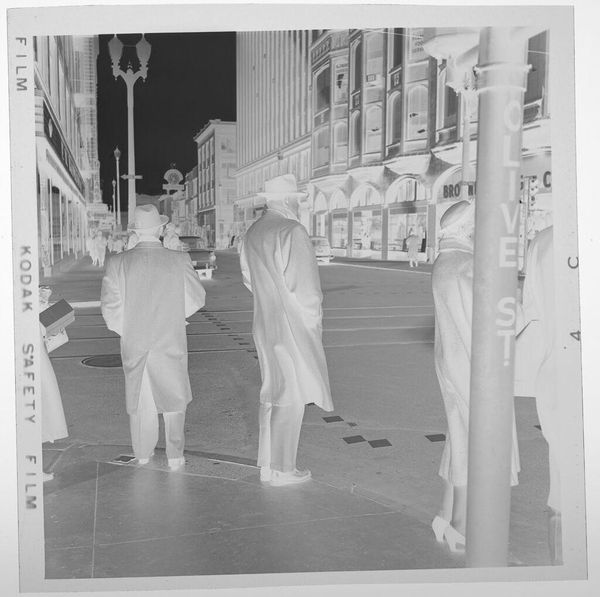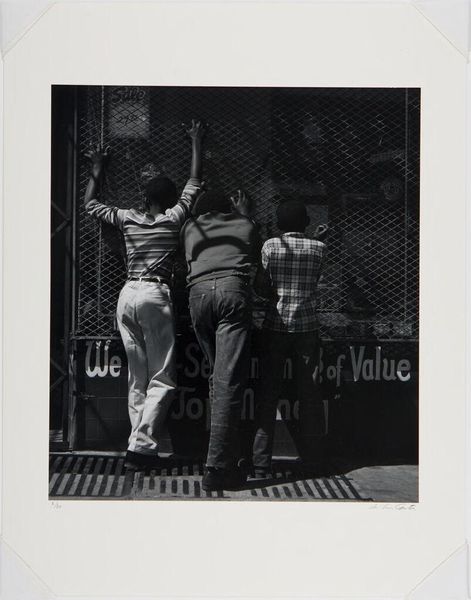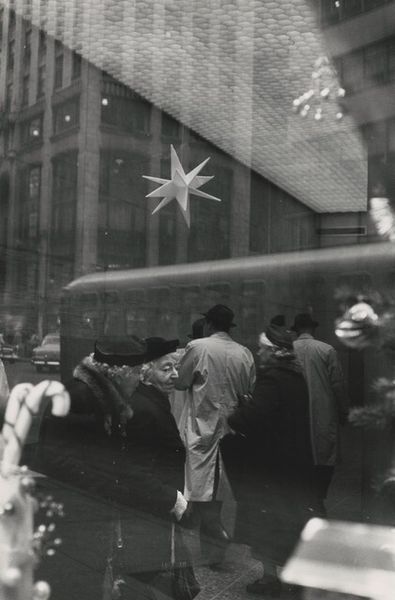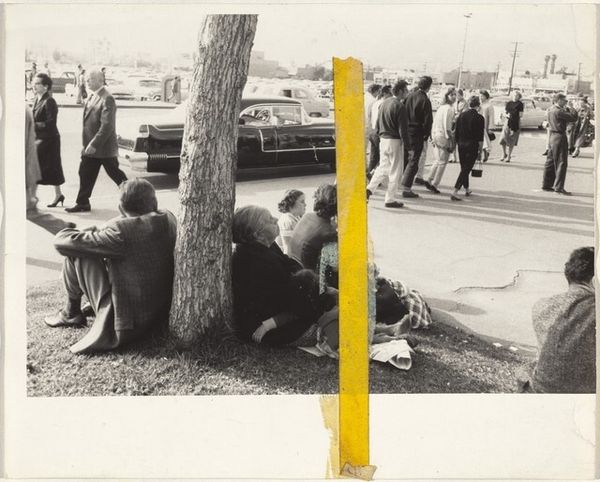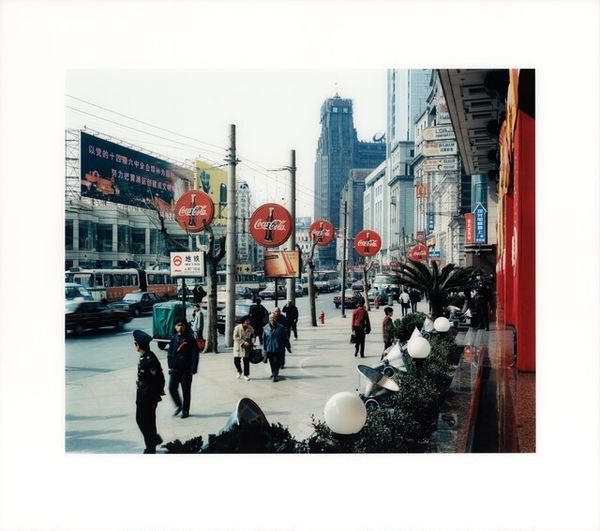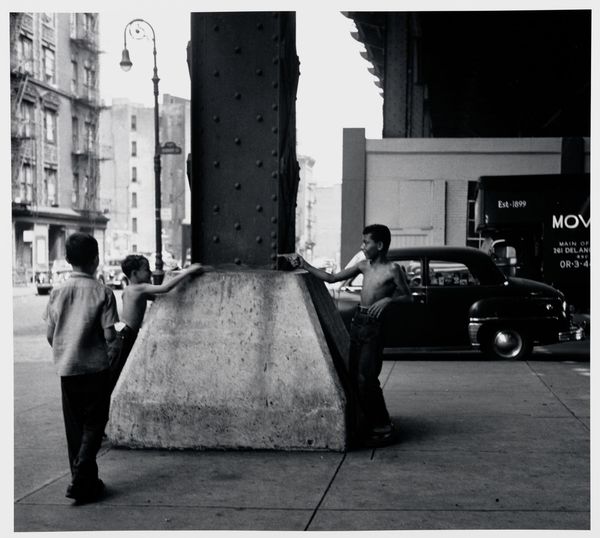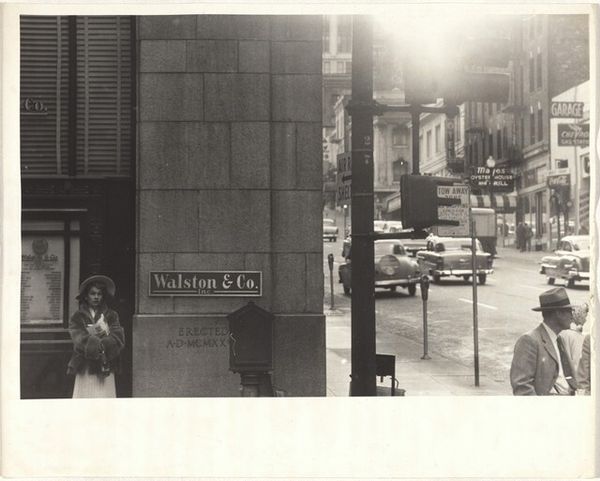
performance, photography
#
performance
#
conceptual-art
#
black and white photography
#
anti-art
#
street-photography
#
photography
#
black-arts-movement
#
black and white
#
monochrome photography
#
street photography
#
monochrome
#
identity-politics
#
monochrome
Copyright: Adrian Piper,Fair Use
Curator: In Adrian Piper's 1970 piece, "Catalysis III," captured in a photograph by Rosemary Mayer, we see Piper amidst a bustling street scene. Immediately, I’m struck by the juxtaposition. She appears almost… vulnerable, or at least out of place, against the backdrop of shoppers and towering buildings. It's quite unsettling. Editor: Yes, and intentionally so, I believe. The immediate focus is the figure in the center plane wearing a sign that says, "WET PAINT." Note how this absurdist gesture plays with ideas about public space and interaction, placing identity at the forefront. This particular photograph acts as documentary evidence of a performance deeply embedded in the conceptual art movement. Curator: The "Wet Paint" sign has a symbolic heft. In many ways it brings to mind semiotic devices meant to draw out an awareness about public art—warning signs that both disrupt and command attention in the same instance. Consider its connection to anti-art movements too, questioning traditional artistic values in an era defined by socio-political turmoil. Editor: Precisely! It also reveals the context of identity politics relevant to the Black Arts Movement in that period, challenging norms and societal expectations. We often view public spaces as these neutral zones, but here Piper is exploring their underlying tensions and codes. Curator: I wonder about the reactions of passersby… Did they understand it as art? Were they amused, annoyed, indifferent? What symbols did they carry with them in relation to how the artwork functions in that particular place and time? What did "wet paint" signify beyond the literal? Editor: Those are all very pertinent questions. This monochrome image has this ability to generate layers of understanding that tap into psychology, anthropology, and history, which further contextualizes the meaning of public art and individual expression against social convention. Curator: It’s a simple act with complex implications. A commentary, a provocation, a mirror… It's fascinating to think about what continues to fuel and reflect its meaning after so many decades. Editor: Absolutely. The image stays relevant precisely because its inherent statement lingers, asking viewers to reflect on their own perceptions, biases, and reactions.
Comments
No comments
Be the first to comment and join the conversation on the ultimate creative platform.


